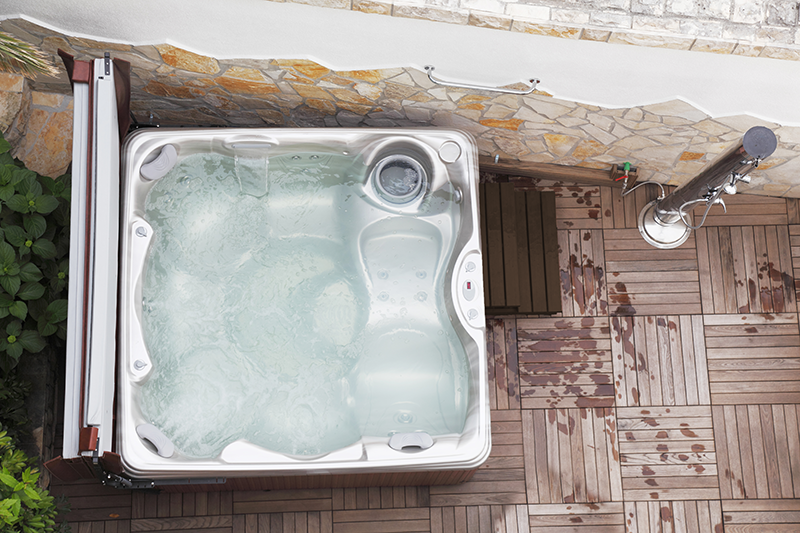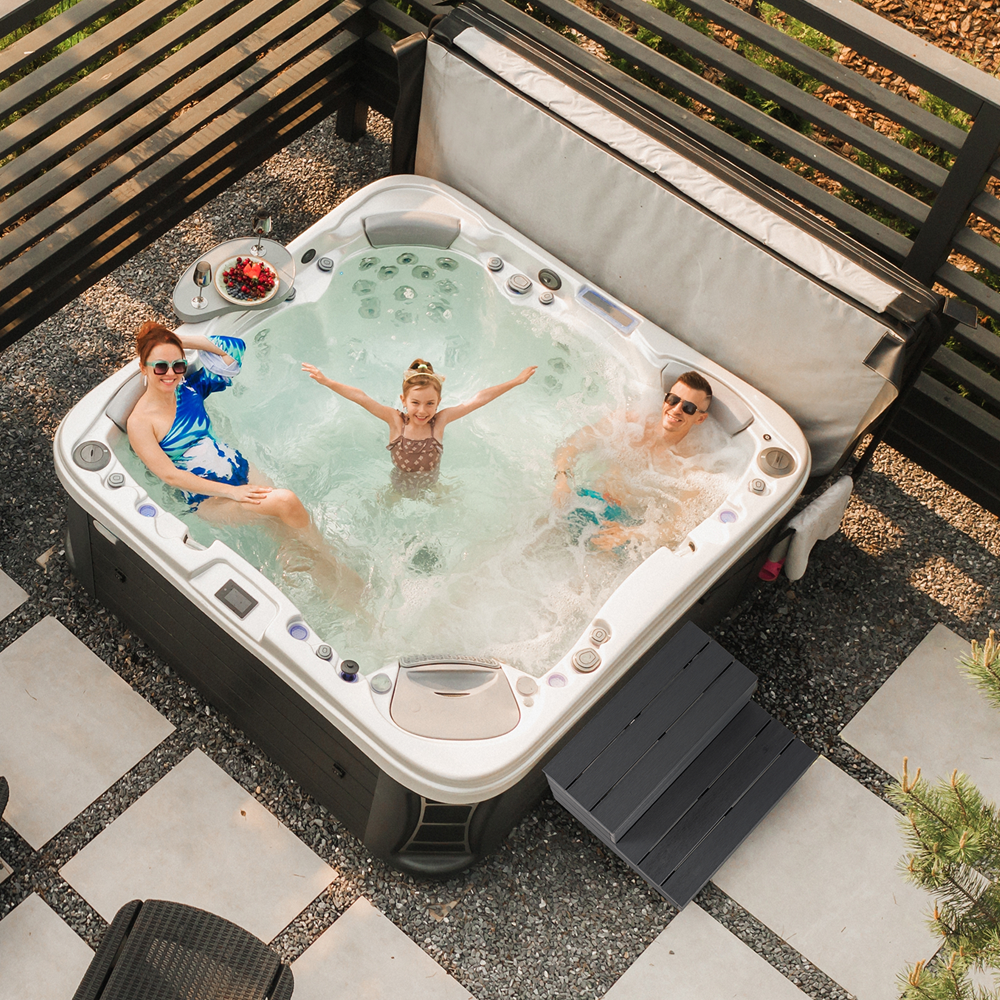
Frequent immersion in a hot tub offers a myriad of advantages suitable for individuals of all ages, and it can prove beneficial in addressing various common health issues. In this article, we’ll delve into the six significant benefits of incorporating a hot tub into your routine.
1. Muscle Relaxation & Pain Relief
The synergy of heat, buoyancy, and massage therapy in hot tubs makes them an ideal solution for easing tense muscles and alleviating joint and muscle pain. Whether recovering from a workout or sports activity, a 15-30 minute soak can significantly aid the recovery process. Increased blood flow and reduced strain on muscles and joints contribute to inflammation reduction and expedite recovery. Hot tubs can also be instrumental in managing chronic pain conditions such as arthritis, promoting joint flexibility and minimizing swelling.
Renowned expert Bruce E. Becker, director of the National Aquatics & Sports Medicine Institute, underscores warm water therapies for making joints looser and reducing pain, with effects extending beyond the immersion period. Heat therapy, particularly in hot tubs, is proven effective in addressing muscle ailments like lower back pain, enhancing flexibility, and improving blood circulation.
2. Stress Relief & Improved Sleep
Hot tubs serve as excellent stress relievers due to their ability to provide a temporary escape from daily pressures. The combination of heat, buoyancy, and massage works to relax muscles, alleviate aches and pains, and reduce overall tension. This relaxation extends to improved sleep quality, as enhanced blood circulation and muscle soothing contribute to a more restful night’s sleep. The warmth from the hot tub aids in quicker sleep onset and a deeper, more sustained sleep throughout the night.
3. Improved Range Of Motion
Regular hot tub use aids in restoring lost flexibility, particularly in joints like the lower back. The buoyancy of water reduces gravitational pull on joints, making the body weigh approximately 90 percent less when submerged. This reduction in joint compression, coupled with the warmth promoting increased circulation, encourages better movement. Taking advantage of hot tub sessions to gently practice flexibility exercises can further enhance joint flexibility.
4. Improved Cardiovascular Health
Relaxing in a hot tub elevates heart rate and lowers blood pressure, contributing to improved cardiovascular health for most individuals. Research from 2016 suggests that hot water immersion can have robust effects on vascular function and blood pressure, reducing the risk of certain cardiovascular diseases. Passive heat therapy, such as regular hot tub use, is especially recommended for individuals with limited abilities to engage in regular exercise. It’s crucial to consult a doctor before incorporating hot tub use into your routine if you have a serious heart condition.
5. Burning Calories
While hot tub use is not a substitute for exercise, a small 2016 study indicates that soaking in a hot bath for an hour can burn a similar number of calories as a 30-minute walk. This can be particularly beneficial for individuals who find it challenging to engage in regular exercise.
Maximizing Hot Tub Benefits
To maximize the benefits of hot tub use, consider the following tips:
- Maintain a Moderate Water Temperature: Experts recommend soaking in water no hotter than 104 degrees Fahrenheit to optimize health benefits.
- Limit Soak Time: Prolonged sessions may lead to adverse effects, so bathing in shorter intervals (15-30 minutes) is advisable.
- Stay Hydrated: Hot tub sessions induce sweating, emphasizing the importance of staying hydrated during extended use.
- Gradual Cooling Down: Avoid sudden exposure to cold water immediately after hot tub use to prevent a spike in blood pressure.
Hot Tub Steps: Don’t Forget the Art of Entering and Exiting
- Safe Entry: Include hot tub steps (or spa steps) in your setup for safe entry and exit. Choose ones with slip-resistant surfaces (like DENKOE) to ensure safety in wet conditions.
- Preserving Your Space: Beyond safety, hot tub stairs help maintain your hot tub and its surroundings by designating a secure entry point, reducing the risk of accidental damage.
- Choosing the Right Steps: When selecting spa steps, prioritize durable materials, non-slip surfaces, and seamless integration with your hot tub area. Elevate your hot tub experience by making safety and convenience a priority with quality spa steps.

Health Disclaimer:
The information provided in this blog post is intended for general informational and educational purposes only. It is not a substitute for professional medical advice, diagnosis, or treatment. Always seek the advice of your physician or other qualified health provider with any questions you may have regarding a medical condition. Never disregard professional medical advice or delay in seeking it because of something you have read on this website.
The hot tub benefits discussed in this article are based on general information and research findings, and individual experiences may vary. Before incorporating hot tub use or any new health-related practices into your routine, it is advisable to consult with a healthcare professional, especially if you have pre-existing health conditions or concerns.
Furthermore, if you have a serious heart condition or other health issues, it is essential to consult with your doctor before regularly using a hot tub, as exposure to heat may impact certain medical conditions. Additionally, if you have low blood pressure, caution is advised when using a hot tub, as it may further lower your blood pressure.
The authors and publishers of this blog post are not responsible for any adverse effects or consequences resulting from the use of the information presented here. Use this information at your own risk.